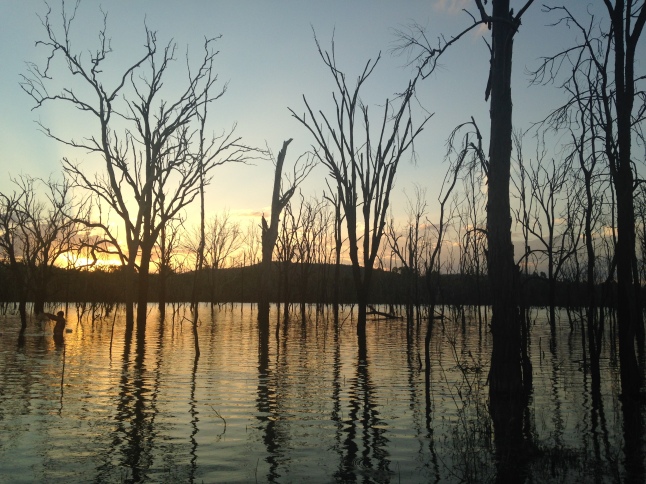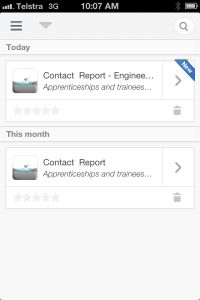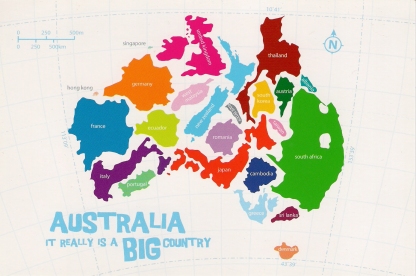The difference between an effective online learning course and one that provides a poor learning experience if often in the faciltation. I have seen some terrible instructional design get great results in the hands of an experienced facilitator and watched students become quickly disengaged from the you-beaut-cost-a-million-bucks-version-that-could-do-everything-except-make-coffee.
Sure I’ve written about 1,000 hours of workplace vocational learning content using adrogogy principles, but the bottom line is adults don’t like to learn alone. Let’s drop the ‘e’ from e-learning and focus on the ‘learning’ for a minute.
The courses I help deliver are accessed from across Australia – and it is a really BIG country. So the temptation for training organisations in reaching their distance students is to either
- post out a workbook; or
- develop an internet based training program; or
- find the budget to send a trainer around the country. This option works if you can organise regional hubs for training and fill the class each time.
So, we’ve given the suite of learner resources to the new geographically remote student, and possibly even given them a welcoming phone call 🙂
Then, as the student works through their new skills, they have a question.
Oh dear.
They will most likely have an option to:
- Add the question to a forum in the hope the teacher finds and answers it before the student forgets what the question was about;
- Email the question to the teacher and …(as above);
- Phone and try to talk to the teacher, most likely leave a message and … (well, you get the gist).
After about 3 attempts of asking questions the student understands the simple answer. Don’t ask.
“This would never happen in a real classroom” I hear you say
But it is impractical to think that everyone can/would attend a classroom. So we have to think a bit laterally and bring the classroom to the learner. Hence the virtual classroom. We use Blackboard Elluminate in QLD TAFE and most web conferencing programs would be just/almost as effective.
What can you do in a virtual classroom session? Pretty much everything you can do in a ‘real’ classroom – talk in real time, have your students watch you present, watch your student respond (via web camera), interrupt each other’s conversations, use break out rooms for group tasks and then consolidate the group’s again, brainstorm and share ideas, record the session for assessment, share video, web sites, quiz knowledge checks, ask questions, build an online community etc.
1. Virtual classrooms bring back direct learning in an e-learning course.

virtual meeting room
Of course not everyone is able to attend even a virtual class. Or maybe they have particular learning needs and would like to re-watch the session at their own convenience. This is the next greatest thing about virtual classes.
2. Classes can be recorded and played back.
Try hitting ‘replay’ in the real world 🙂
Once you start using web conferencing to present learning you will no doubt start thinking of other ways this technology will be useful – personal or group tutorials, industry networking, orientations, sign ups, RPL discussions, assessments…
The NWP50107 Diploma Water Operations (Hydrographic Monitoring) is taught every Monday morning (7.30am!) with students, teachers and industry guests logging in from around Australia.
Through LinkedIn I have sourced industry guest speakers from around the world to come to our virtual classes and present on selected topics. And they have done this with no expectation of being paid. You will find most industry people are passionate about their own industry and the experienced ones are willing to share their knowledge.
3. Maximise your industry networks and bring the workplace into the classroom.
This increases your credibility with industry and ensures current workplace practices are reinforced in your course.
4. Model sustainability practices.
Using web conferencing as virtual classrooms helps your Institute and students lower their carbon footprint, minimises travel requirements and provides consistency of training.
Sustainable calculation: Try calculating your carbon footprint to drive 200klms to attend a class. Now multiply this by 20 students. Now assume they all attended only 10 face to face classes each year. How much carbon have we saved if we now multiply this for the 300 study groups we have been training every year for the past 2 years. That is a lot of carbon offset!
Answer taken from http://www.carbonfootprint.com/calculator.aspx
200 tonnes CO2 based on 20 people travelling 400 km in a Average Car Petrol Car Average petrol Car average value (return trip) for 10 classes. If this represented a typical study group and all attended virtual classroom training instead, we save 60,000 tonnes CO2 from being added to the environment!






